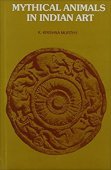Ihamriga, Īhāmṛga, Iha-mriga: 10 definitions
Introduction:
Ihamriga means something in Hinduism, Sanskrit. If you want to know the exact meaning, history, etymology or English translation of this term then check out the descriptions on this page. Add your comment or reference to a book if you want to contribute to this summary article.
The Sanskrit term Īhāmṛga can be transliterated into English as Ihamrga or Ihamriga, using the IAST transliteration scheme (?).
In Hinduism
Natyashastra (theatrics and dramaturgy)
Source: Wisdom Library: Nāṭya-śāstraĪhāmṛga (ईहामृग) refers to one of the “ten kinds of dramatic plays” (daśarūpa), according to the Nāṭyaśāstra chapter 20. These different types of dramas are considered to have originated from the various styles (vṛtti), which is discussed in chapter 22 of the same work. The Īhāmṛga type of drama includes the following styles: Verbal (bhāratī), Grand (sāttvatī) and Energetic (ārabhaṭī).
Source: archive.org: Natya ShastraĪhāmṛga (ईहामृग).—One of the ten types of play (nāṭya).—The Īhāmṛga is a play of four Acts in which divine males are implicated in a fight over divine females. It should be a play with well-ordered construction in which the Plot of love is to be based on causing discord among females, carrying them off and oppressing [the enemies], and when persons intent on killing are on the point of starting a fight, the inpending battle should be avoided by some artifice.
The Vyāyoga and the Īhāmṛga are to have three segments (sandhi). There should be no Development (garbha) and Pause (avamarśa—vimarśa) in these two. and the Graceful Style (kaiśikī) also has no place in them.
Source: Shodhganga: Elements of Art and Architecture in the Trtiyakhanda of the Visnudharmottarapurana (natya)Īhāmṛga (ईहामृग) refers to one of the twelve kinds of Rūpaka, which represents the dṛśyakāvya division of Kāvya (“poetry”), according to the Viṣṇudharmottarapurāṇa, an ancient Sanskrit text which (being encyclopedic in nature) deals with a variety of cultural topics such as arts, architecture, music, grammar and astronomy.—According to the Viṣṇudharmottarapurāṇa, īhāmṛga consists of many acts. But the Sāhityadarpaṇa fixes it in four acts. The Viṣṇudharmottarapurāṇa states that in īhāmṛga a gandharva i.e., a demigod should be the hero and śṛṇgāra should be the predominant sentiment which arises from the unsatisfaction of sexual enjoyment.

Natyashastra (नाट्यशास्त्र, nāṭyaśāstra) refers to both the ancient Indian tradition (shastra) of performing arts, (natya—theatrics, drama, dance, music), as well as the name of a Sanskrit work dealing with these subjects. It also teaches the rules for composing Dramatic plays (nataka), construction and performance of Theater, and Poetic works (kavya).
Languages of India and abroad
Sanskrit dictionary
Source: DDSA: The practical Sanskrit-English dictionaryĪhāmṛga (ईहामृग).—[īhāpradhāno mṛgaḥ]
1) a wolf; सुकृतेहामृगाकीर्णम् (sukṛtehāmṛgākīrṇam) Rām.2.15.35.
2) an artificial deer.
3) a division
Derivable forms: īhāmṛgaḥ (ईहामृगः).
Īhāmṛga is a Sanskrit compound consisting of the terms īhā and mṛga (मृग).
Source: Cologne Digital Sanskrit Dictionaries: Shabda-Sagara Sanskrit-English DictionaryĪhāmṛga (ईहामृग).—m.
(-gaḥ) 1. A wolf. 2. A division of the drama. E. īhā wish, and mṛga a deer.
Source: Cologne Digital Sanskrit Dictionaries: Monier-Williams Sanskrit-English Dictionary1) Īhāmṛga (ईहामृग):—[from īha > īh] m. a wolf, [Mahābhārata; Rāmāyaṇa]
2) [v.s. ...] a kind of drama, [Sāhitya-darpaṇa]
Source: Cologne Digital Sanskrit Dictionaries: Yates Sanskrit-English DictionaryĪhāmṛga (ईहामृग):—[īhā-mṛga] (gaḥ) m. A wolf.
[Sanskrit to German]
Sanskrit, also spelled संस्कृतम् (saṃskṛtam), is an ancient language of India commonly seen as the grandmother of the Indo-European language family (even English!). Closely allied with Prakrit and Pali, Sanskrit is more exhaustive in both grammar and terms and has the most extensive collection of literature in the world, greatly surpassing its sister-languages Greek and Latin.
Kannada-English dictionary
Source: Alar: Kannada-English corpusĪhāmṛga (ಈಹಾಮೃಗ):—
1) [noun] any of various wild canine carnivores (genus Canis); a wolf.
2) [noun] a division of the drama consisting of four acts.
Kannada is a Dravidian language (as opposed to the Indo-European language family) mainly spoken in the southwestern region of India.
See also (Relevant definitions)
Ends with: Grihamriga.
Full-text: Yamirukam, Kusumashekharavijaya, Viravijaya, Dasharupa, Aviddha, Ikamirukam, Krishnamishra, Samkshobha, Vyayoga, Rupa, Bhana, Uddhata.
Relevant text
Search found 12 books and stories containing Ihamriga, Īhāmṛga, Ihamrga, Iha-mriga, Īhā-mṛga, Iha-mrga; (plurals include: Ihamrigas, Īhāmṛgas, Ihamrgas, mrigas, mṛgas, mrgas). You can also click to the full overview containing English textual excerpts. Below are direct links for the most relevant articles:
Dasarupaka (critical study) (by Anuru Ranjan Mishra)
Part 14 - Conclusion < [Chapter 9 - Īhāmṛga (critical study)]
Part 3-6 - Īhāmṛga rules < [Chapter 9 - Īhāmṛga (critical study)]
Introduction to the Īhāmṛga type of Drama < [Chapter 9 - Īhāmṛga (critical study)]
Dramaturgy in the Venisamhara (by Debi Prasad Namasudra)
Description of Īhāmṛga < [Chapter 2 - Nature and Classification of Sanskrit Drama]
Sandhi (the combination of different phases) < [Chapter 4 - Dramaturgy in Veṇīsaṃhāra]
Animal Kingdom (Tiryak) in Epics (by Saranya P.S)
Vishnudharmottara Purana (Art and Architecture) (by Bhagyashree Sarma)
1.4. Types of Drama < [Chapter 3 - Drama and Dance]
Jivanandana of Anandaraya Makhin (Study) (by G. D. Jayalakshmi)
Classical Sanskrit literature < [Chapter 1 - Allegorical Plays in Sanskrit Literature]
Annadatri-carita (study) (by Sarannya V.)
Dramatic Appraisal of Annadatri-carita (Introduction) < [Chapter 4 - Dramatic Appraisal of Annadatri-carita]
Related products
